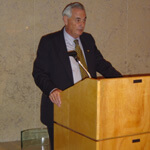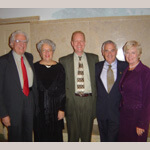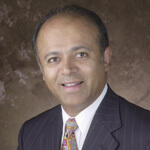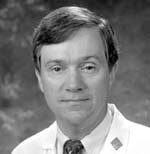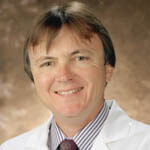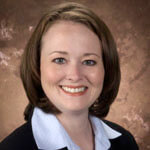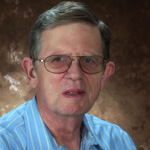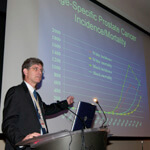
The 13th Annual Cancer Research Symposium of the San Antonio Cancer Institute (SACI) focused on prevention of the dreaded set of diseases that make up cancer. SACI, one of two National Cancer Institute (NCI)-Designated Cancer Centers in Texas, is a partnership of The University of Texas Health Science Center at San Antonio and the Cancer Therapy and Research Center.
Ian M. Thompson Jr., M.D., chairman of the department of urology at the Health Science Center and leader of the SACI Cancer Prevention and Population Science Program, set the tone with his discussion of health disparities and cancer prevention. He noted that in the United States, where a large percentage of men over 50 have had the prostate-specific antigen (PSA) test, physicians have seen a 27 percent decline in mortality related to prostate cancer since 1987. “That fall in mortality has not been seen in Mexico, where PSA is not prevalent,” Dr. Thompson said. “In fact, there has been an increase.”
Dr. Thompson discussed the San Antonio Biomarkers of Risk for Prostate Cancer (SABOR) study, the large-scale Health Science Center program that is part of the NCI’s Early Detection Research Network. In addition to genetic biomarkers, SABOR is examining diet, obesity and other variables with the goal of moving toward tailored risk factors for prostate cancer.
Keynote speaker Douglas Weed, M.D., Ph.D., director of the Cancer Prevention Fellowship Program at the NCI, said obesity increasingly is linked to many cancers, including breast, colon, endometrial, prostate, kidney and gallbladder, and that an estimated 15 percent to 20 percent of cancer deaths may be linked to obesity.
Dr. Weed showed slides depicting the steady advance of obesity nationwide. He said the NCI will focus on diet, energy balance and other factors in the next few years to answer the question, “Does obesity really cause cancer?” He pointed the audience to a new NIH Web site http://www.obesityresearch.nih.gov/ that presents information about NIH-supported research to facilitate progress towards obesity prevention and treatment.
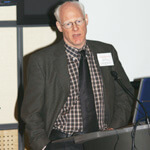
Raymond Bergan, M.D., of the Robert H. Lurie Comprehensive Cancer Center at Northwestern University, invited to speak on the development of cancer prevention agents, said no single gene operates independently in cancer and that each cancer has multiple molecular abnormalities. Drugs that hit multiple targets therefore are critical to preventing cancer.
Cancer Among other topics, Dr. Bergan also spoke about ongoing studies of genistein, a nutraceutical agent contained in soy.
Gregory R. Mundy, M.D., professor of cellular and structural biology at the Health Science Center and leader of the SACI Cancer-Related Bone Disease Program, discussed the possibility that compounds that inhibit osteoclasts (cells that break down bone) might also prevent tumor growth in bone. He also discussed the possibility that certain nutraceuticals may have beneficial effects in the bone disease associated with myeloma.
Dr. Mundy’s talk also touched on evidence that bone pain related to metastatic bone cancer is associated with increased osteoclast activity and that bone pain can be decreased by radiation therapy.
Other SACI Symposium plenary speakers included David H. Boldt, M.D., professor of medicine at the Health Science Center, chief of hematology and interim director of the SACI; Sang Eun Lee, Ph.D., assistant professor of molecular medicine and SACI staff investigator and member; and Peter J. Hornsby, Ph.D., professor of physiology and SACI member.
Attendees had the opportunity to view 93 scientific poster presentations submitted by researchers from several research institutions in the San Antonio area that were displayed in the Tom and Nancy Loeffler Atrium at the Health Science Center’s Children’s Cancer Research Institute, site of the symposium. An additional 12 posters describing the SACI Shared Resource Facilities were also available for viewing. Recipients of the best trainee poster awards were (predoctoral student category) Robert Nichols and Cynthia Norris; (Ph.D. category) Samy L. Habib, Ph.D., and Julie A. Sterling, Ph.D.; and (M.D. category) Xiu Fen Lei, M.D., Ph.D., and Seung-Min Yoo, M.D., Ph.D.
The SACI members thank the following symposium sponsors: The USAA Foundation, The William Knox Holt Family Foundation, The San Antonio Area Foundation, The University of Texas Health Science Center at San Antonio, the Cancer Therapy and Research Center, the American Cancer Society and the National Cancer Institute.


